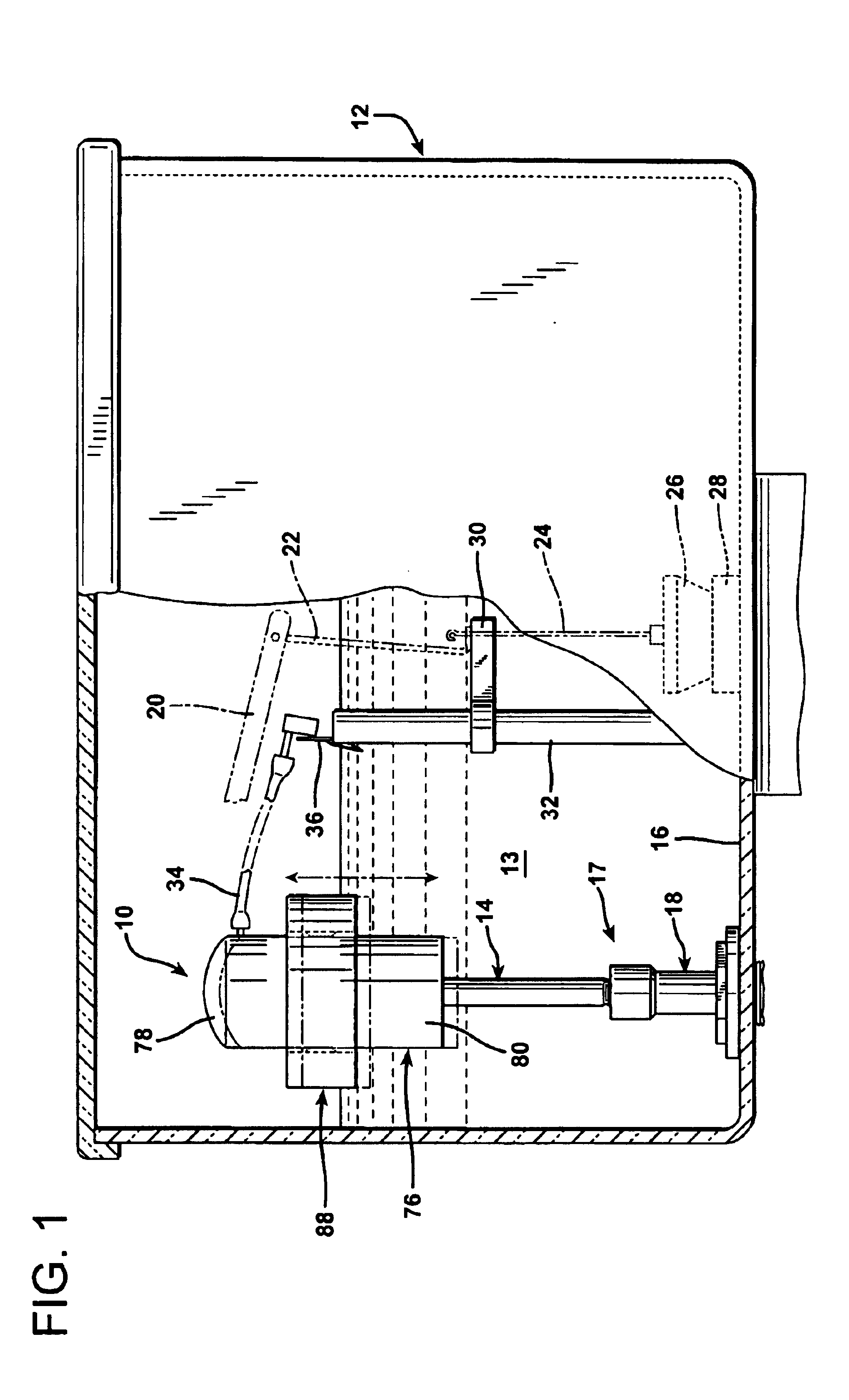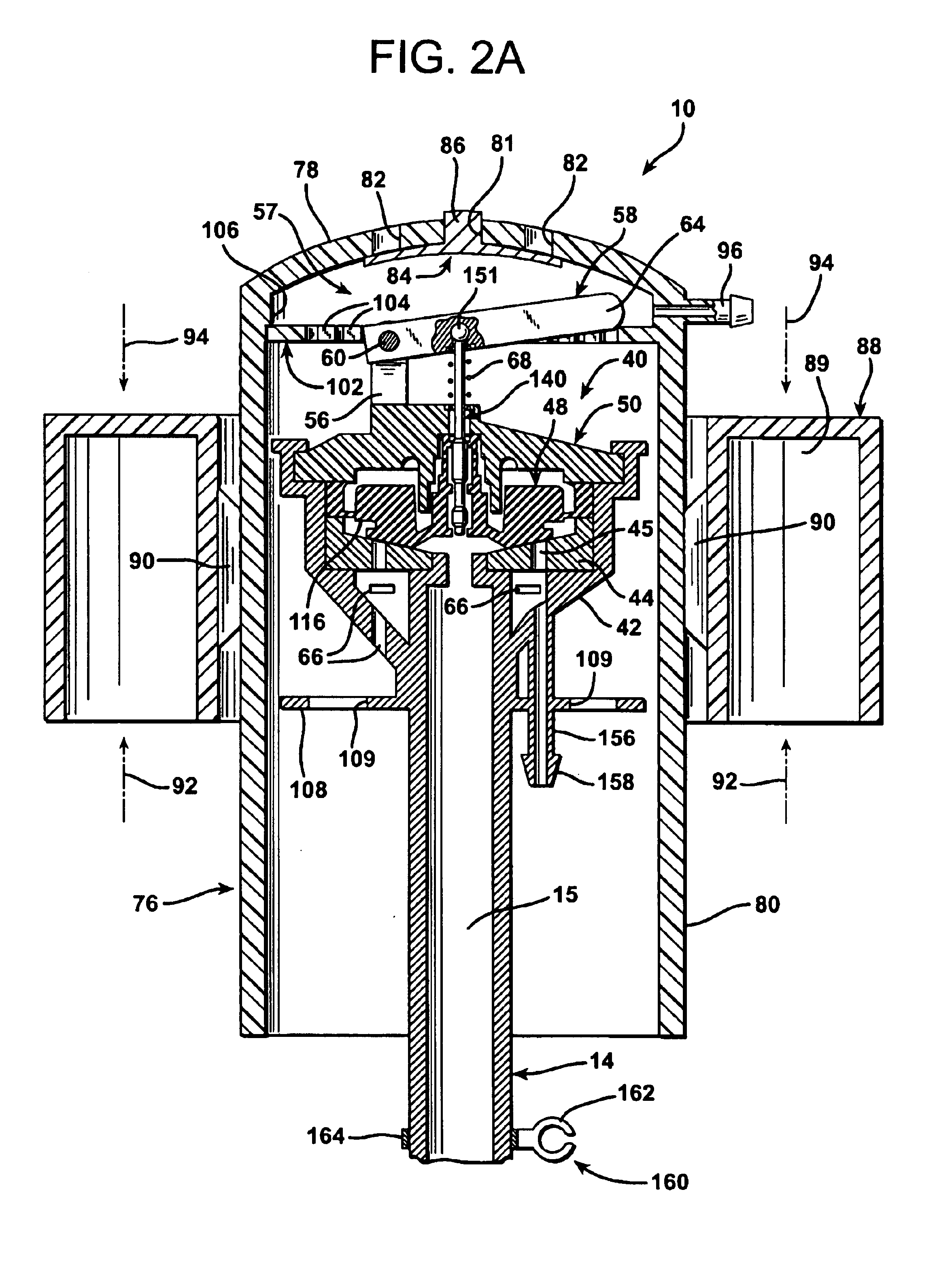Hydraulic valve
- Summary
- Abstract
- Description
- Claims
- Application Information
AI Technical Summary
Benefits of technology
Problems solved by technology
Method used
Image
Examples
Embodiment Construction
FIG. 1 illustrates a ballcock valve assembly 10 according to the invention located in the conventional flush tank 12 of a toilet water closet. The tank 12 is normally filled with water 13, to a maximum level 100, as illustrated. The ballcock valve assembly 10 is mounted atop an upright fluid supply pipe 14 that is secured to the bottom 16 of the tank 12 by means of a mounting coupling 17, hereinafter to be described.
The remaining components of the flush tank 12 are of a conventional design and include a flushing arm 20 actuated by a conventional flush lever (not shown) to raise lift wires 22 and 24 to unseat a stopper 26 from a flush valve seat 28 that in turn leads to a toilet bowl (not shown). The lower lift wire 24 is guided through an opening in a horizontally projecting guide wire bracket 30 that is secured to a hollow, vertical overflow pipe 32 that also leads to the toilet. Alternatively, a chain 23 may be connected from the flushing arm 20 directly to the movable end of a fl...
PUM
 Login to View More
Login to View More Abstract
Description
Claims
Application Information
 Login to View More
Login to View More - R&D
- Intellectual Property
- Life Sciences
- Materials
- Tech Scout
- Unparalleled Data Quality
- Higher Quality Content
- 60% Fewer Hallucinations
Browse by: Latest US Patents, China's latest patents, Technical Efficacy Thesaurus, Application Domain, Technology Topic, Popular Technical Reports.
© 2025 PatSnap. All rights reserved.Legal|Privacy policy|Modern Slavery Act Transparency Statement|Sitemap|About US| Contact US: help@patsnap.com



